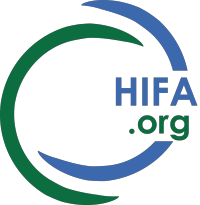Join HIFA! www.hifa.org/joinhifa
HIFA continues our collaboration with WHO, Health Systems Global (CHW Thematic Working Group) and other key organisations (icddr,b) on a series of three major HIFA thematic discussions on CHWs. These discussions are supporting the dissemination and uptake of the WHO Guideline on health policy and system support to optimize community health worker programmes (CHW Guideline), launched in October 2018.
The first thematic discussion took place in June and July 2019 and looked at selection, training and certification of CHWs. More information and summaries are available here.
Our second thematic discussion starts on 21 October 2019. The main discussion will take place on the HIFA (English) forum with parallel discussions on HIFA-French, HIFA-Portuguese, HIFA-Spanish, and CHIFA (child health).
The main findings of both discussions will be presented at the 2nd International Symposium on CHWs in Dhaka, Bangladesh, 22-24 November 2019.
The work is led by the HIFA working group on Community Health Workers.
Join HIFA today to get further information and to be ready to participate!
The following questions are offered as a framework for discussion. Note that we welcome and encourage contributions on *any* aspect of CHWs at *any* time for the duration of this project (ends Sept 2020).
Q1. Recommendation 6 suggests certain strategies (appropriate supervisor–supervisee ratio allowing meaningful and regular support; ensuring supervisors receive adequate training; coaching and mentoring of CHWs; use of observation of service delivery, performance data and community feedback; prioritization of improving the quality of supervision) to use for supportive supervision of CHWs. How do these relate to current practice in your country/experience? Are they implementable in your country/experience?
Q2. Recommendation 7 recommends remuneration of CHWs for their work with a financial package commensurate with the job demands, complexity, number of hours, training and roles that they undertake. WHO suggests not paying CHWs exclusively or predominantly according to performance-based incentives. How does this relate to current practice in your country/experience? Is it implementable in your country/experience?
Q3. Recommendation 8 recommends providing paid CHWs with a written agreement specifying role and responsibilities, working conditions, remuneration and workers’ rights. How does this relate to current practice in your country/experience? Is it implementable in your country/experience?
Q4. Recommendation 9 suggests that a career ladder should be offered to practising CHWs, recognizing that further education and career development are linked to selection criteria, duration and contents of pre-service education, competency-based certification, duration of service and performance review. How does this relate to current practice in your country/experience? Is it implementable in your country/experience?
Q5. Recommendation 10 suggests using the following criteria in most settings to determine a target population size in the context of CHW programmes: expected workload based on epidemiology and anticipated demand for services; frequency of contact required; nature and time requirements of the services provided; expected weekly time commitment of CHWs (factoring in time away from service provision for training, administrative duties, and other requirements); local geography (including proximity of households, distance to clinic and population density). How feasible is it in your country/context to determine CHW:population ratios taking these factors into consideration? If your country/programme currently does this, what tools do you use?
The WHO Guideline: Health policy and system support to optimize community based health worker programmes is available here.
Contact us for details.

